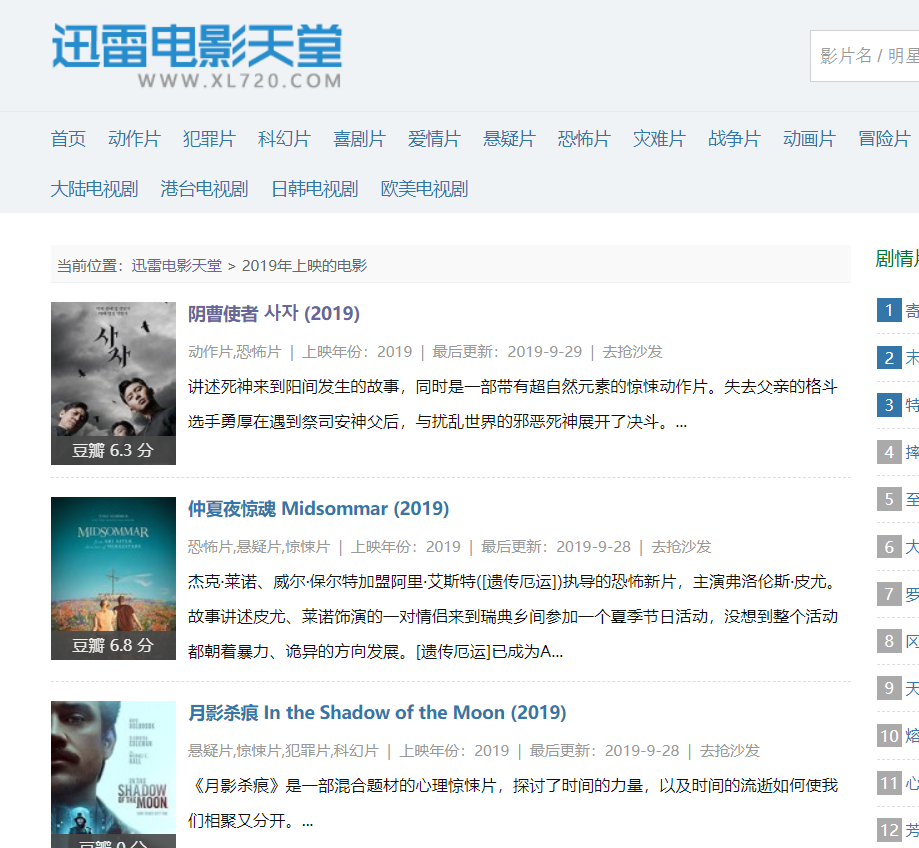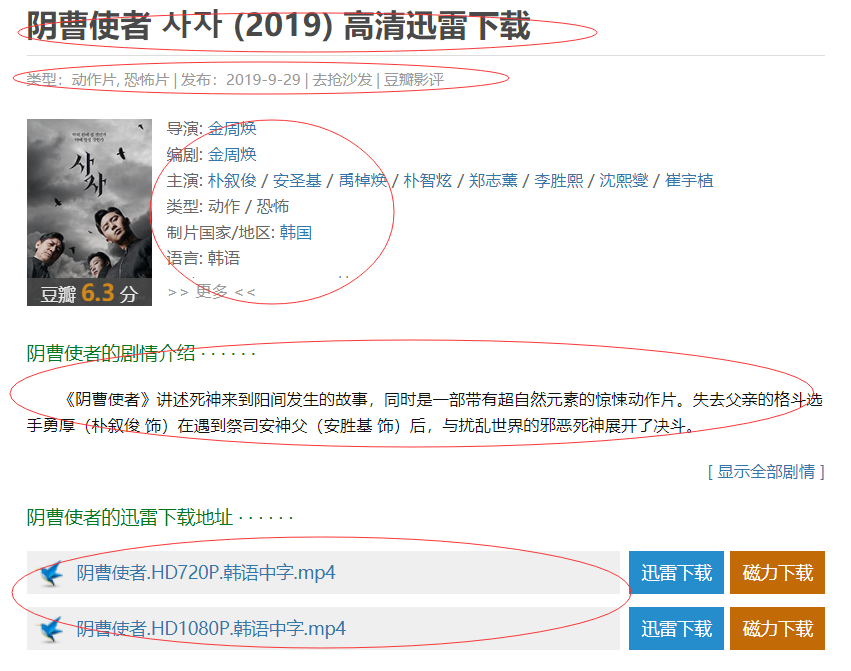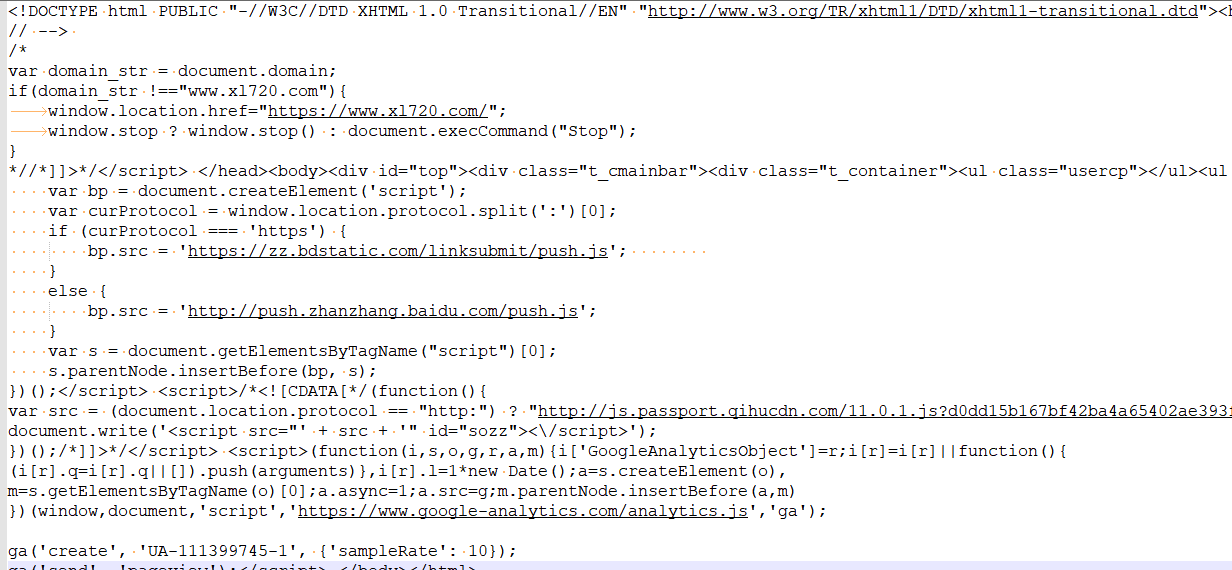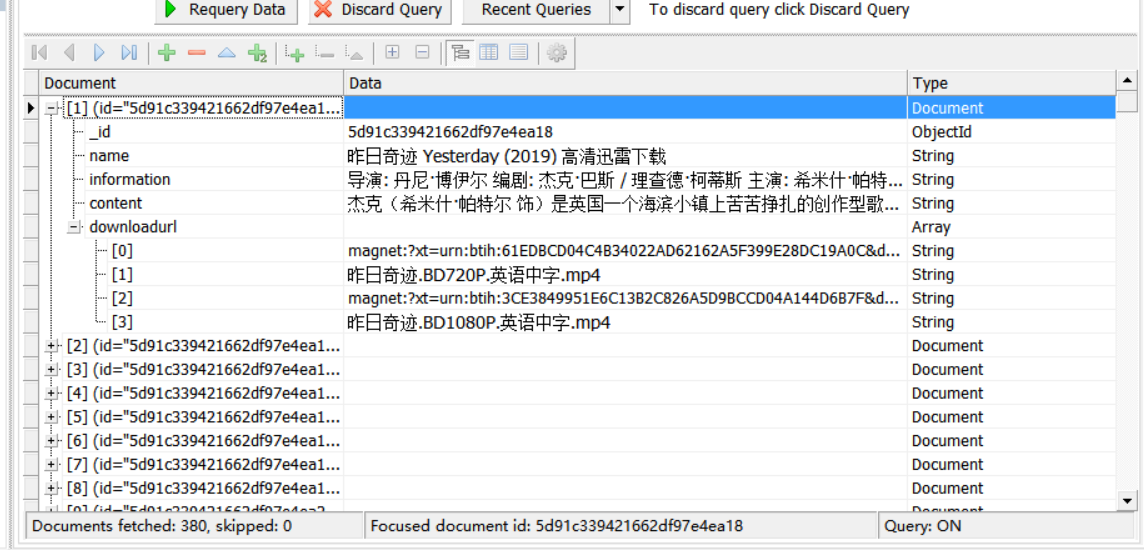前言
几天没用scrapy爬网站了,正好最近在刷电影,就想着把自己常用的一个电影分享网站给爬取下来保存到本地mongodb中
项目开始
第一步仍然是创建scrapy项目与spider文件
切换到工作目录两条命令依次输入
- scrapy startproject xunleidianying
- scrapy genspider xunleiBT https://www.xl720.com/thunder/years/2019
内容分析
打开目标网站(分类是2019年上映的电影),分析我们需要的数据

进入页面是列表的形式就像豆瓣电影一样,然后我们点进去具体页面看看

这个页面就是我们需要拿到的内容页面,我们来看我们需要哪些数据(某些数据从第一个页面就可以获得,但是下载地址必须到第二个页面)
- 电影名称
- 电影信息
- 电影内容剧情
- 电影下载地址
分析完成之后就可以首先编写 items.py文件
import scrapy class XunleidianyingItem(scrapy.Item): # define the fields for your item here like: # name = scrapy.Field() name = scrapy.Field() information = scrapy.Field() content = scrapy.Field() downloadurl = scrapy.Field() pass
另外别忘了去settings.py中开启 ITEM_PIPELINES 选项
爬虫文件编写
老样子,为了方便测试我们的爬虫,首先编写一个main.py的文件方便IDE调用
main.py:
import scrapy.cmdline scrapy.cmdline.execute('scrapy crawl xunleiBT'.split())
首先我们先测试直接向目标发送请求是否可以得到响应
爬虫文件 xunleiBT.py编写如下:
# -*- coding: utf-8 -*- import scrapy class XunleibtSpider(scrapy.Spider): name = 'xunleiBT' allowed_domains = ['https://www.xl720.com/thunder/years/2019'] start_urls = ['https://www.xl720.com/thunder/years/2019/'] def parse(self, response): print(response.text) pass
运行 main.py 看看会出现什么

好的,发现直接返回正常的网页也就是我们要的网页,说明该网站没有反爬机制,这样我们就更容易爬取了
然后通过xpath定位页面元素,具体就不再赘述,之前的scarpy教程中都有 继续编写爬虫文件
# -*- coding: utf-8 -*- import scrapy #导入编写的 item from xunleidianying.items import XunleidianyingItem class XunleibtSpider(scrapy.Spider): name = 'xunleiBT' allowed_domains = ['www.xl720.com'] start_urls = ['https://www.xl720.com/thunder/years/2019/'] def parse(self, response): url_list = response.xpath('//h3//@href').getall() for url in url_list: yield scrapy.Request(url,callback=self.detail_page) nextpage_link = response.xpath('//a[@class="nextpostslink"]/@href').get() if nextpage_link: yield scrapy.Request(nextpage_link, callback=self.parse) def detail_page(self,response): # 切记item带括号 BT_item = XunleidianyingItem() BT_item['name'] = response.xpath('//h1/text()').get() BT_item['information'] = ''.join(response.xpath('//div[@id="info"]//text()').getall()) BT_item['content'] = response.xpath('//div[@id="link-report"]/text()').get() BT_item['downloadurl'] = response.xpath('//div[@class="download-link"]/a/text() | //div[@class="download-link"]/a/@href').getall() yield BT_item
ITEM爬取完成后该干什么?当然是入库保存了,编写pipelines.py文件进行入库保存
再次提醒别忘了去settings.py中开启 ITEM_PIPELINES 选项
pipelines.py文件代码如下:
import pymongo #连接本地数据库 myclient = pymongo.MongoClient("mongodb://localhost:27017/") #数据库名称 mydb = myclient["movie_BT"] #数据表名称 mysheet = mydb["movie"] class XunleidianyingPipeline(object): def process_item(self, item, spider): data = dict(item) mysheet.insert(data) return item
再次运行main.py 等待运行完成后打开数据库查询

数据保存完成,这次我们一共导入了380个数据,可以愉快的查看电影了